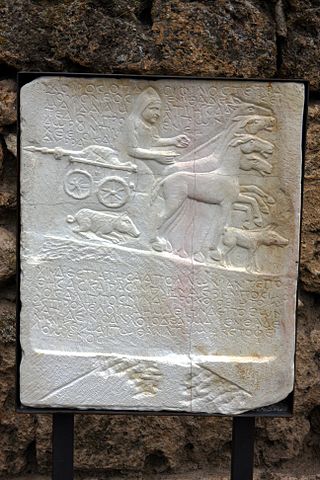Carved gravestones with images and short poems celebrating the deceased were common in the ancient world, but it wasn’t just people who got them. This one commemorates a pig who apparently died in some kind of traffic accident. Like other Greek epitaphs, this one is phrased in the first person, as if the pig were narrating its own story.
A little pig, everyone’s friend, a young quadruped, I lie here, after leaving behind the land of Dalmatia to be offered as a gift. I walked through Dyrrachium and Apollonia in my longing, and passed through the whole earth alone untouched. Now, by the violence of wheels, I have left the sunlight behind. I longed to see Emathia and the phallic chariot, but now I lie here, and my debt to death is cleared.
Supplementum Epigraphicum Graecarum 25:711
(My own translation)
The story seems to be that a pig was bought somewhere in Dalmatia (the Balkans) and driven overland toward the plain of Emathia in Macedonia (west of modern-day Thessaloniki), to be offered as a sacrifice in a festival for Dionysus (which often involved a large decorated phallus carried in a procession). The stone was found in Edessa, a city right at the edge of Emathia, and it seems that here the poor pig got run over by a cart.
It’s certainly unusual for an animal to have a gravestone like this. There was a custom of writing joke epitaphs for animals, but few people went to the expense of actually getting them carved in stone. Perhaps this pig was special, or perhaps the gravestone represents a kind of substitute for the religious act of sacrifice that was no longer possible once the pig was killed on the road.
Whatever the case may be, that was clearly some pig.
Image: Copy of pig stela, photograph by Philipp Pilhofer via Wikimedia (Edessa; 2-3 c. CE; carved stone)
Out There is an occasional feature highlighting intriguing art, spaces, places, phenomena, flora, and fauna.
